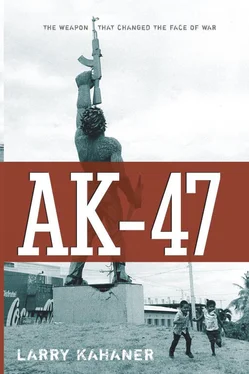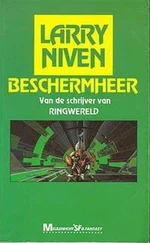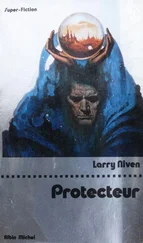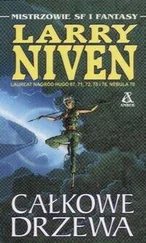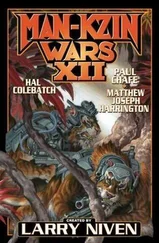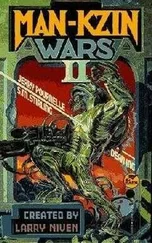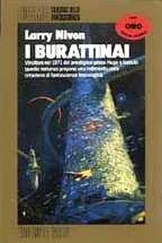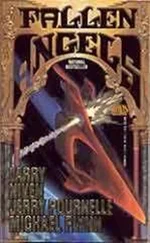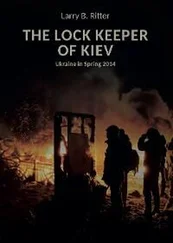Larry Kahaner - AK-47
Здесь есть возможность читать онлайн «Larry Kahaner - AK-47» весь текст электронной книги совершенно бесплатно (целиком полную версию без сокращений). В некоторых случаях можно слушать аудио, скачать через торрент в формате fb2 и присутствует краткое содержание. Город: Hoboken, Год выпуска: 2007, ISBN: 2007, Издательство: John Wiley & Sons, Inc., Жанр: История, military_history, на английском языке. Описание произведения, (предисловие) а так же отзывы посетителей доступны на портале библиотеки ЛибКат.
- Название:AK-47
- Автор:
- Издательство:John Wiley & Sons, Inc.
- Жанр:
- Год:2007
- Город:Hoboken
- ISBN:9780470315668
- Рейтинг книги:3 / 5. Голосов: 1
-
Избранное:Добавить в избранное
- Отзывы:
-
Ваша оценка:
- 60
- 1
- 2
- 3
- 4
- 5
AK-47: краткое содержание, описание и аннотация
Предлагаем к чтению аннотацию, описание, краткое содержание или предисловие (зависит от того, что написал сам автор книги «AK-47»). Если вы не нашли необходимую информацию о книге — напишите в комментариях, мы постараемся отыскать её.
AK-47 — читать онлайн бесплатно полную книгу (весь текст) целиком
Ниже представлен текст книги, разбитый по страницам. Система сохранения места последней прочитанной страницы, позволяет с удобством читать онлайн бесплатно книгу «AK-47», без необходимости каждый раз заново искать на чём Вы остановились. Поставьте закладку, и сможете в любой момент перейти на страницу, на которой закончили чтение.
Интервал:
Закладка:
Somehow, the militia learned of the gun, and the teen was arrested but later released. He had vehemently insisted he did not own a pistol, and the authorities were unable to find it.
Fearing that he would be found out eventually, Kalashnikov and his friend fled, scattering pieces of the Browning in the snow along the way. He later wrote of this prophetic experience, “That was it. The perpetrator of my hardships, my first acquaintance with arms.”
After making his way to Kazakhstan and finding a job with the railroad, Kalashnikov was drafted in 1938. Because of his mechanical acumen, he was assigned to a tank company, where he invented several improvements to gauges that checked engine operating hours. He was never able to fully test his inventions, however, because Germany attacked in June 1941, and he was sent to the front. Before he left, he heard stories of the Germans’ superior tactics and savagery, but he had no idea he would be a victim or how it would change his life.
Only a few weeks after shipping out, Sergeant Kalashnikov was out of the war for good. His injuries were substantial enough to keep him from serving again. Convalescing in the hospital, he naively promised himself to build a weapon that would drive the Germans out of his homeland. This promise turned into obsession. “I thought about it when I woke up at night, and tried to imagine what kind of submachine gun I would make. In the morning, I took a notebook from the night table and made various drawings. Later, I redid them many times.”
In an effort to keep his mind diverted from pain, he read everything he could find at the hospital library about submachine guns—which many military planners saw as the ultimate infantry weapon and the key to winning land battles. Combatant nations had quickly put into production their own submachine guns, but the Soviet Union was late to the game and few soldiers had access to these rapid-fire weapons.
What frightened Kalashnikov and other Soviet soldiers was the German Maschinenpistole (MP40), also known as the Schmeisser after weapons designer Hugo Schmeisser. Hugo Schmeisser did not actually design the MP40, but he worked on the MP41, which was an MP40 outfitted with an old-fashioned wooden rifle stock. Like all submachine guns, it fired pistol-sized bullets—nine millimeters in diameter, the familiar 9mm of many contemporary pistols—instead of the larger, more powerful ammunition used in rifles. (Sometimes the distinctions between pistol and rifle rounds are not always clear cut because pistols can use large-sized rounds and rifles sometimes can use small-sized rounds. With some exceptions, however, rifle rounds are generally longer and heavier and contain more propellant, thus offering more “killing power.”) This necessitated firing at close range to be effective, but the MP40 made up for this drawback by being lightweight, easy to handle, and able to stream bullets at an astonishing rate of 500 rounds per minute. The magazine, a device that automatically feeds ammunition into the gun, carried thirty-two bullets, or rounds in military parlance. The MP40 (with most small weapons, the number designates the year it was introduced or produced, 1940 in this case) also was shorter than a rifle and could be easily carried by airborne and tank soldiers. It was the first firearm of its kind to be made entirely of metal, with no wooden stock or handle grips, which made it almost indestructible. By 1945, the Germans had produced over a million of these, and it became so popular that even Allied soldiers preferred using these captured weapons instead of their own submachine guns, which were variations of the Thompson submachine gun, or “Tommy Gun,” of 1920s gangster fame.
Indeed, the Soviet Union had a submachine gun, the PPD34/38, but it was poorly designed. Although it fired 800 rounds per minute, it was heavy and unreliable in combat. It was also too difficult to mass-produce. A much simpler weapon followed, the PPSh41, which was put into limited production in 1941 but not approved until the following year. The gun was popular with troops. However, it was not as well made as its German counterpart, because the Soviet Union’s riveting and welding technology lagged far behind that of the Germans.
Upon his release from the hospital, Kalashnikov convinced friends at the railroad to allow him to work in their metal shop. With his left arm stiff and not fully recovered, he set about improving his motherland’s submachine gun, because the war on the eastern front was still raging with no end in sight.
Hitler had made a strategic error that offered the Soviets some breathing room to develop weapons. Instead of sending all his troops directly to Moscow, an overconfident Führer rejected the advice of his generals and diverted one of his three armies south to occupy the Ukraine, which was rich in oil and gas resources. After more than a month on this distraction, Hitler was running out of time; the harsh Soviet winter was coming fast. Mud roads were becoming frozen slabs and his troops were not prepared for the frigid weather. By November, the Germans had reached within seventeen miles of the Kremlin, but could advance no further due to a Soviet counterattack aided by temperatures dropping to minus twenty-nine degrees Fahrenheit. German soldiers were not acclimated or dressed for the cold; many froze to death, and the survivors were exhausted. The Germans found themselves on the defensive for the first time.
With neither side able to extract a clear victory, the war continued, and so did Kalashnikov’s work. Along with several others, he toiled for several months in the railroad shop, producing a submachine gun that he hoped would level the battlefield. His single goal was to protect the motherland. With the prototype under his arm, he made his way to Alma-Ata, where he attracted the attention of Communist Party and military officials who saw promise in this self-taught designer. Although they rejected his submachine gun, Kalashnikov garnered some important lessons. He learned that his weapon was too complex to perform under rigorous combat conditions. For example, the firing mechanism employed too many moving parts. The gun overall had many small parts, increasing the chance that if any single piece were to fail, the gun would be rendered inoperable. However, seeing a spark of genius in this young man, the authorities offered Kalashnikov the opportunity to hone his skills at a technical school, where he invented a carbine, a weapon that was popular because of its versatility.
A CARBINE IS SIMILAR to an ordinary rifle but with a shorter barrel and stock. It was originally developed for cavalry soldiers because they could not fire a full-sized rifle from horseback. Later, carbines were the logical choice for paratroopers and tank soldiers, because they were light and fit in tight quarters. Unlike submachine guns, which use pistol-sized rounds, carbines employ larger, rifle-type ammunition.
Many regular rifles, like the M1 Garand, the mainstay of U.S. troops during World War II, came in both full-length and carbine versions. In fact, Kalashnikov borrowed and modified for his own carbine the M1’s method of feeding bullets from the magazine into the chamber for firing as well as the spent cartridge ejection system.
By this time, however, it was becoming clear to the German military, the Wehrmacht, that warfare was changing again and neither the submachine gun nor the carbine were the best infantry weapons. Submachine-gun ranges were too short and their bullets too light for combat that was now being fought at ranges between three hundred and one thousand feet, the result of battles taking place mainly in urban environments. Machine guns had the range and the killing power of larger bullets but were too heavy to carry in fast-moving combat situations. In addition, the massive recoil from machine guns jerked the weapon around, which made them difficult to keep on target. A new kind of weapon was needed that combined the light weight of the submachine gun with the range and killing power of a machine gun.
Читать дальшеИнтервал:
Закладка:
Похожие книги на «AK-47»
Представляем Вашему вниманию похожие книги на «AK-47» списком для выбора. Мы отобрали схожую по названию и смыслу литературу в надежде предоставить читателям больше вариантов отыскать новые, интересные, ещё непрочитанные произведения.
Обсуждение, отзывы о книге «AK-47» и просто собственные мнения читателей. Оставьте ваши комментарии, напишите, что Вы думаете о произведении, его смысле или главных героях. Укажите что конкретно понравилось, а что нет, и почему Вы так считаете.
